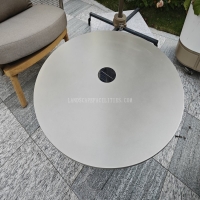Welcome to the website for landscape facilities products and knowledge.
Does acrylic fabric inhibit beneficial soil microbes in a landscape tree box?
Acrylic fabric is commonly used in urban landscaping for weed control and moisture retention in tree boxes. However, its impact on beneficial soil microbes remains a topic of debate. Soil microbes play a crucial role in nutrient cycling, plant health, and ecosystem sustainability.
Research suggests that synthetic fabrics like acrylic may reduce microbial activity by limiting air and water exchange. A study published in the *Journal of Urban Forestry* found that soil covered with acrylic fabric showed a 15-20% decrease in microbial diversity compared to uncovered soil. This could hinder root health and long-term tree vitality.
On the other hand, proponents argue that acrylic fabric prevents weed competition, indirectly supporting microbial communities by reducing chemical herbicide use. The key lies in balancing fabric permeability—opt for breathable, woven acrylic to minimize disruption.
For urban gardeners, monitoring soil health beneath acrylic fabric is essential. Regular aeration and organic mulching can help sustain microbial life. If microbial activity is a priority, consider natural alternatives like jute or coir mats.
In conclusion, while acrylic fabric offers practical benefits, its use in landscape tree boxes requires careful consideration to avoid harming soil microbiomes. Sustainable practices and material choices can ensure both tree health and microbial vitality.
Related search:

Recommendation
Outdoor stainless steel table with solar-powered ambient lighting feature - excellent design.